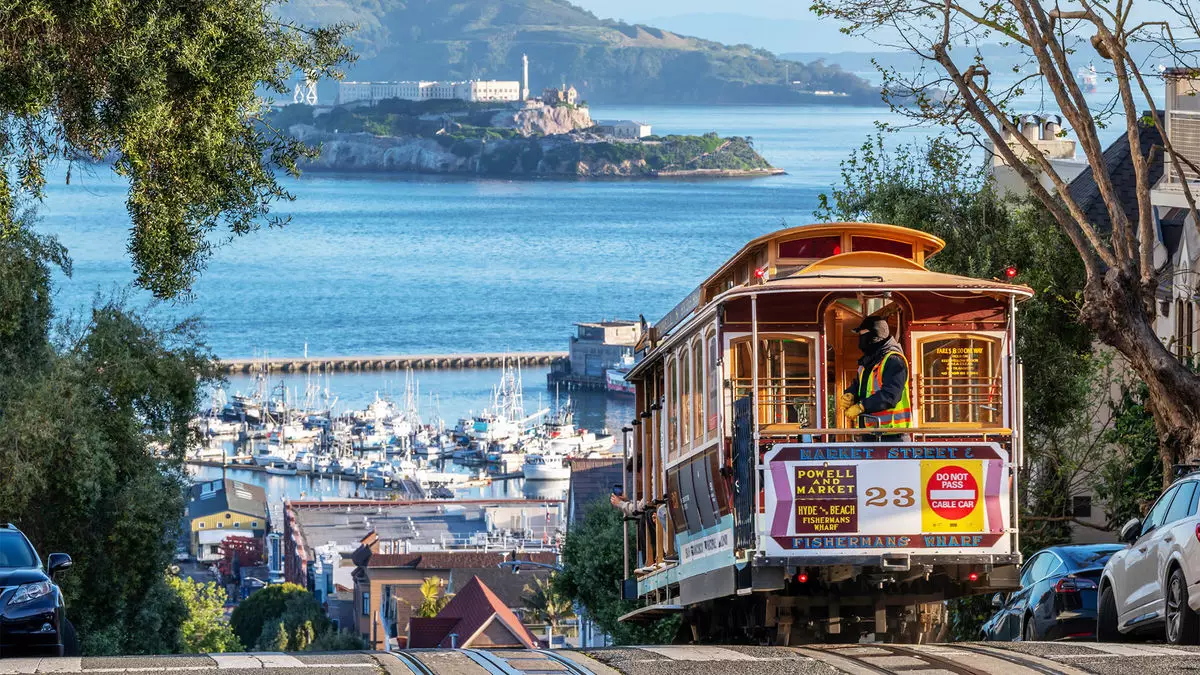As we turn the pages on 2024, San Francisco’s tourism sector reflects the profound impact of the pandemic. The year marked an extensive struggle, serving as a pivotal low point in the city’s recovery journey. Despite this bleak outlook, industry insiders foresee a promising shift beginning in 2025, fueled by an array of significant upcoming events and a rejuvenation of the convention business. Emmy Hise, senior director of hospitality analytics at CoStar, describes 2024 as “the trough of the recovery,” accentuating the necessity for resilience in the face of declining visitor interest and hotel performance indicators.
The challenges faced weren’t just about low numbers; they represented a substantial transformational potential. During 2024, the absence of notable convening opportunities such as the Asia-Pacific Economic Cooperation summit, which last lit up San Francisco in 2023, left a void in expected visitor numbers. Hise articulated her disappointment regarding the lack of last-minute conventions, highlighting the arduous nature of the recovery period. The hotel industry metrics were particularly disheartening: occupancy rates languished while average daily rates (ADR) diminished, revealing a city that once stood at the zenith of travel appeal now finds itself grappling with a precipitous drop in room rates.
Another aspect compounded the city’s challenges—public safety and the prevailing perceptions surrounding it. The hesitance of travelers can often be attributed to concerns they might harbor regarding safety. Yet, recent data indicates a noteworthy positive shift; property crime decreased by 32%, and violent crime was reduced by 14% when compared year-over-year. These statistics, coupled with a dedicated city effort to tackle homelessness, are hopeful signs that the narrative surrounding San Francisco may be beginning to change.
Anna Marie Presutti, the CEO of the San Francisco Travel Association, embodies this optimism as she notes a significant decrease in street homelessness, the lowest seen in a decade. Efforts to provide shelter and housing for the vulnerable population have demonstrated tangible results and offer a foundation from which the city can rebuild its image. Presutti believes that societal perceptions may evolve as individuals recognize the beauty and vibrancy inherent in the city, moving beyond outdated and negative narratives.
The tide appears to be shifting, with major events scheduled to anchor San Francisco’s revival in the coming years. Exciting sporting spectacles, including the NBA All-Star Game and NCAA March Madness, add to the anticipation that 2025 will inject new energy into the city. Presutti suggests that these high-profile tournaments will not only draw crowds but also help recalibrate the city’s image nationally and globally.
In addition to sporting events, 2026 promises even more attention as San Francisco hosts international engagements like FIFA World Cup matches and the Super Bowl at Levi’s Stadium. Such gatherings could mark a significant turning point, reinforcing the city as a vibrant hub for tourism.
Convention business is slowly recalibrating its trajectory with a notable uptick in bookings. A seismic shift in booking practices was highlighted by the recently confirmed Microsoft Ignite convention, which will take place in late 2025. Traditionally, securing major events would require years of advance planning; however, this instance reflects a more agile approach adapting to the new normal. Presutti emphasizes that an extraordinary booking like this is a strong indicator of renewed confidence within the convention scene: “It is demonstrating that things are moving—they’re just behaving a little bit differently than they have in the past.”
As the hospitality landscape begins to stabilize, forecasts from San Francisco Travel project an increase in visitor total numbers from 23.2 million in 2024 to a promising 23.9 million by the following year. Furthermore, spending metrics are anticipated to rise dramatically. Hotel occupancy rates are predicted to improve, and vibrant activities in the Moscone Center convention complex signal a resurgence in the sector that was once a central pillar of the city’s economy.
Beyond numbers, San Francisco is committed to refining the visitor experience. By establishing designated entertainment zones, the city aims to create dynamic spaces for both tourists and locals, allowing for outdoor gatherings with permissible alcohol service. Expanding this festive atmosphere through street festivals and night markets hopes to activate neighborhoods, enticing visitors to explore its various enclaves.
All signs point to a reimagined promotional strategy as well, where San Francisco’s charm will permeate unexpected mediums, aiming to showcase the city’s hidden gems beyond traditional promotional channels. Presutti assures stakeholders that 2025 is set to unveil the best of San Francisco while innovating strategies that align with contemporary consumer expectations.
As San Francisco emerges from the challenges of the pandemic with an eye toward growth, the mixture of optimistic projections, major event calendars, proactive safety initiatives, and strategic marketing endeavors signal a hopeful revival. The path ahead may be steep, but with resilience at the core of its revival, San Francisco is determined to reclaim its place on the global tourism stage.

